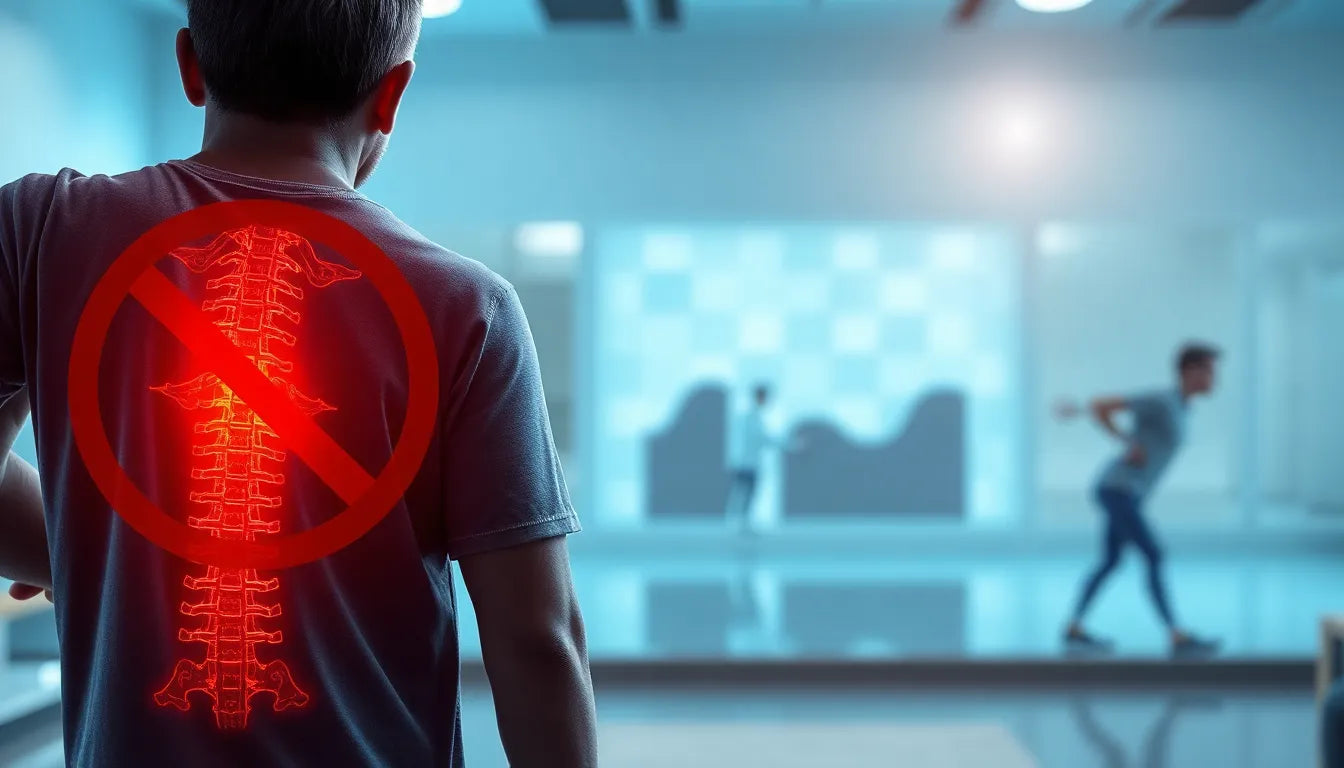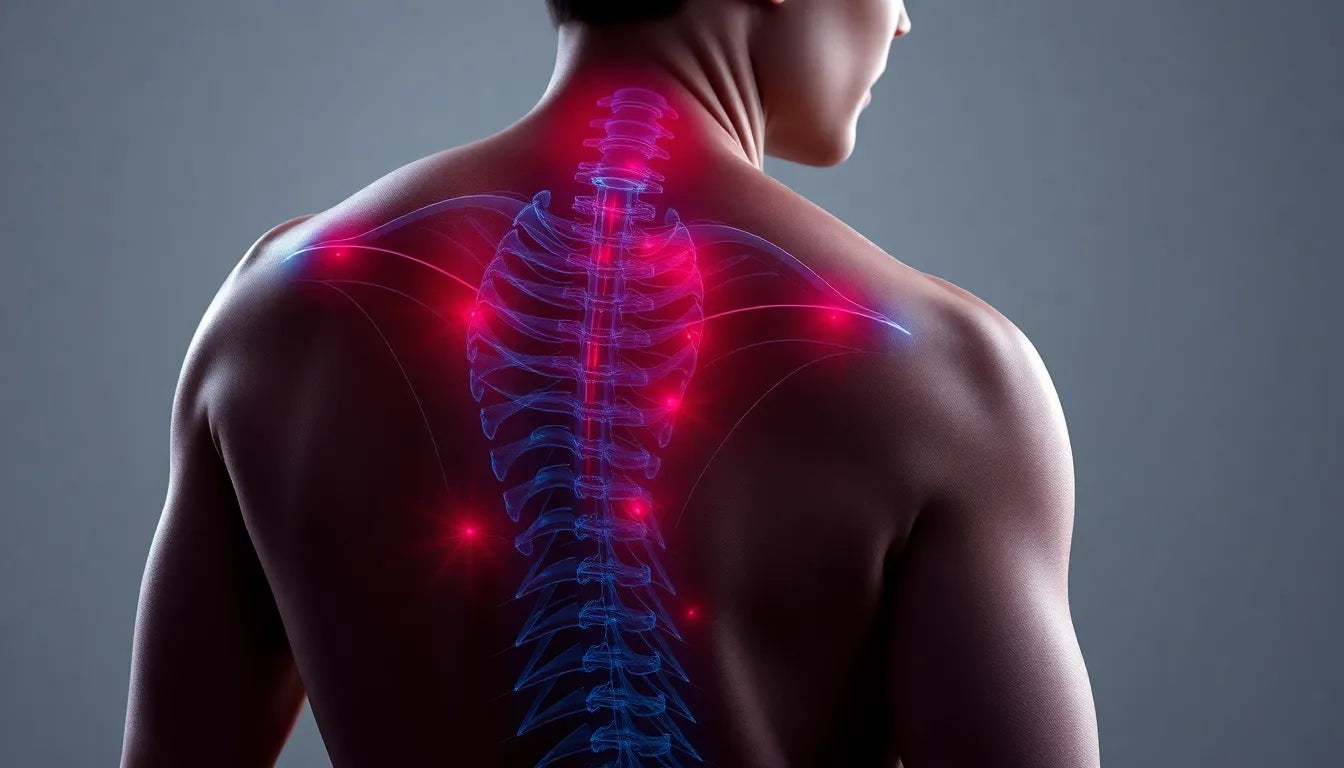A herniated disc in the lower back can be a debilitating condition, impacting daily life with symptoms such as pain, numbness, and tingling. This occurs when the soft inner gel of a spinal disc pushes through a tear in the tougher outer layer, often pressing on nearby nerves. The result can be sharp or chronic pain, which may radiate from the lower back to the legs, affecting mobility and overall quality of life. Understanding and managing these symptoms is crucial for maintaining an active lifestyle and preventing further complications.
the role of massage in pain management
Massage therapy has emerged as a supportive approach in managing the discomfort associated with a herniated disc in the lower back. While massage cannot cure the herniation itself, it can significantly alleviate muscle tension, improve circulation, and promote relaxation, helping to reduce the severity of symptoms. By focusing on the muscles surrounding the affected area, massage can provide relief from the secondary effects of a herniated disc, such as muscle tightness and nerve irritation.
setting the stage for effective massage techniques
This blog post aims to explore safe and effective massage techniques that can help manage the pain associated with a lower back herniated disc. By understanding the types of massage that are beneficial and how to apply them safely, individuals can take control of their pain management journey. Whether seeking professional therapy or looking to incorporate self-massage techniques at home, the right approach can make a significant difference in alleviating discomfort and enhancing mobility.
As we delve into the specifics of massage therapy for herniated discs, it is important to remember that consulting with healthcare professionals is essential. They can provide personalized advice and ensure that any massage therapy is appropriate for your specific condition. By integrating massage with other therapeutic practices, such as physical therapy and ergonomic adjustments, individuals can create a holistic strategy for managing their symptoms and improving their quality of life.
types of massage therapy for herniated discs
When dealing with a herniated disc in the lower back, selecting the right type of massage therapy is crucial for symptom relief and overall well-being. Here are some popular massage techniques known for their effectiveness in managing lower back pain:
swedish massage
Swedish massage is characterized by gentle, flowing strokes that aim to relax the muscles and improve circulation. This technique is particularly beneficial for reducing muscle tension and promoting relaxation, which can help in alleviating the discomfort associated with a herniated disc. By enhancing blood flow, Swedish massage supports the delivery of nutrients to the affected area, aiding in the healing process.
deep tissue massage
Deep tissue massage involves applying firm pressure to target deeper layers of muscle and connective tissue. This approach is effective in addressing chronic tension and stiffness, common issues for those with herniated discs. By focusing on the deeper muscle layers, deep tissue massage can help restore mobility and reduce pain, making it a valuable option for those seeking relief from persistent discomfort.
myofascial release
Myofascial release is a technique that targets the fascia, the connective tissue surrounding muscles. By applying gentle pressure and stretching the fascia, this method helps release tension and improve flexibility. The benefits include pain reduction and an increased range of motion, which are essential for individuals dealing with the limitations imposed by a herniated disc.
trigger point therapy
Trigger point therapy focuses on applying pressure to specific "knots" or trigger points within the muscles that can form due to nerve compression. This technique is particularly effective in relieving localized pain and muscle tightness, which often accompany a herniated disc. By addressing these trigger points, individuals can experience significant relief from muscle tension and discomfort.
lymphatic drainage massage
Lymphatic drainage massage is a gentle technique aimed at reducing swelling and inflammation, which are common issues in individuals with herniated discs. By promoting lymphatic flow, this massage reduces pressure on the affected area, leading to decreased pain and improved mobility.
self-massage techniques for herniated discs
In addition to professional massage therapy, self-massage can be a practical approach for managing herniated disc symptoms at home. Tools like lacrosse balls or massage canes can be used to apply gentle pressure to trigger points in the lower back. Here is a simple step-by-step guide to performing self-massage safely:
- Start by lying on a flat surface and placing a lacrosse ball under the lower back, avoiding direct pressure on the spine.
- Gently roll over the ball to target tight muscles, focusing on areas of tension.
- Apply light pressure and hold for 20-30 seconds on each sore spot, gradually increasing pressure as tolerated.
- Repeat the process on different areas, ensuring not to exceed 10-15 minutes per session.
Always remember to consult with a healthcare provider before starting any self-massage routine to ensure it is appropriate for your condition.
professional vs. DIY massage: making the right choice
Deciding between professional massage therapy and self-care depends on the severity of the herniated disc and individual comfort levels. Consulting with healthcare providers is essential before initiating any massage therapy. They can provide personalized guidance on whether professional therapy is necessary or if self-massage techniques can be safely performed at home.
While self-massage offers convenience and cost-effectiveness, professional massage therapists have the expertise to tailor techniques specifically to your needs, ensuring safe and effective relief. In cases of acute or severe herniation, professional intervention is often recommended to prevent exacerbating symptoms.
precautions and safety measures
When performing massage for a herniated disc, it is crucial to avoid direct pressure on the spine or inflamed areas to prevent worsening the condition. Instead, focus on adjacent muscle groups, such as the quadratus lumborum and gluteal muscles, to provide relief without causing harm.
By understanding and applying these massage techniques and safety measures, individuals can effectively manage lower back herniated disc pain, enhancing their quality of life and mobility. Always prioritize safety and consult with professionals to ensure the best outcomes in your pain management journey.
integrating massage with other therapies
To effectively manage lower back herniated disc pain, integrating massage with other therapies can provide a more holistic approach to relief. Combining massage therapy with physical therapy, hydrotherapy, and ergonomic aids can enhance the benefits and provide comprehensive pain management. Physical therapy exercises, such as those focusing on core strengthening and flexibility, complement massage by addressing the underlying muscular imbalances that contribute to discomfort. Hydrotherapy, utilizing warm water to relax muscles and improve circulation, can further reduce pain and stiffness.
Ergonomic products, such as lumbar supports and cushions, play a crucial role in enhancing the effects of massage therapy. These aids help maintain proper posture, reduce strain on the lower back, and prevent exacerbation of symptoms during daily activities. By incorporating these elements, individuals can create a supportive environment that promotes healing and reduces the risk of further injury.
visual demonstrations and educational resources
For individuals seeking to perform massage techniques at home, visual demonstrations can be incredibly helpful. Video tutorials from reputable sources provide step-by-step guidance on safe positioning and techniques, ensuring that users apply the correct methods without causing harm. These resources often highlight the importance of avoiding direct pressure on the spine and demonstrate how to focus on surrounding muscle groups for effective relief.
Access to educational materials, such as online courses or workshops led by physiotherapists or massage therapists, can further enhance understanding and application of massage techniques. By investing time in learning proper methods, individuals can confidently incorporate self-massage into their pain management routine.
content gaps and opportunities
While there is a wealth of information available on massage techniques for herniated discs, there are still content gaps that present opportunities for improvement. Many resources lack detailed step-by-step visuals for at-home massage, which can be crucial for individuals who prefer self-care. Additionally, there is a need for more evidence-based differentiation between acute and chronic herniated disc scenarios, as the approach to massage may vary depending on the severity and duration of symptoms.
Addressing these gaps by providing comprehensive guides that include visual aids and tailored programs for specific pain patterns can greatly benefit individuals seeking relief. Furthermore, highlighting the role of ergonomic aids in complementing massage therapy can position Anodyne as a leader in offering holistic solutions for managing herniated disc pain.
frequently asked questions
Can massage heal a herniated disc?
No, massage cannot heal the disc itself. However, it can alleviate associated muscle tension and pain, providing relief from symptoms.
Is it safe to massage a herniated disc at home?
Yes, with proper guidance and precautions, it is safe to perform self-massage at home. It is essential to consult a healthcare provider first to ensure the techniques are appropriate for your condition.
What should I avoid during a massage for a herniated disc?
During massage, avoid applying direct pressure on the spine and inflamed areas. Instead, focus on surrounding muscles to prevent exacerbating symptoms.
How often should I get a massage for herniated disc pain?
The frequency of massage therapy depends on individual needs and the severity of symptoms. Consulting with a professional can provide personalized advice on the appropriate schedule.
What other therapies can complement massage for herniated disc relief?
Physical therapy, ergonomic aids, and holistic approaches like hydrotherapy can complement massage therapy, providing comprehensive pain management and enhancing recovery.
Sources
- Prestige Physio. "Massage Techniques for Herniated Discs."
- MoreGoodDays. "Massage for Herniated Disc: Techniques and Tips."
- Spine-Health. "Massage Therapy for a Herniated Disc."
- Doc Mike Massage. "Self-Massage Techniques for Lower Back Pain."
- General How-To. "Massage Techniques for Back Pain Relief."























